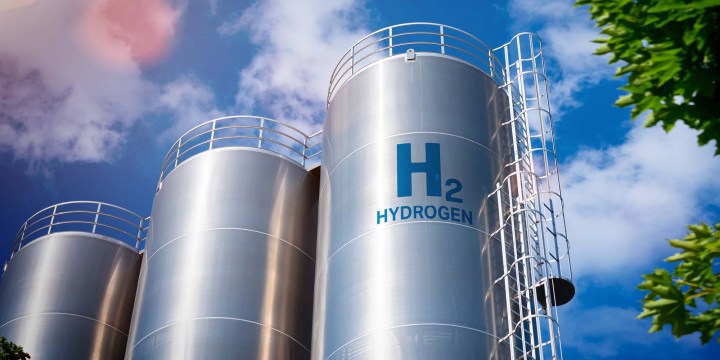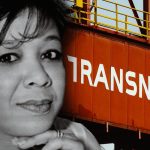COMPANIES
Sasol and ArcelorMittal to breathe new life into SA’s West Coast economy with green hydrogen hub

The Saldanha Bay Municipality, which suffered a huge blow when ArcelorMittal shut down its Saldanha Steel plant in 2020, will see a welcome boost with the announcement of a partnership between Sasol and ArcelorMittal South Africa to develop a green hydrogen hub in the area.
The two powerhouses, which are both chasing a goal of net zero emissions by 2050, plan to advance studies into two potential projects: the Saldanha green hydrogen and derivatives study, which will explore the region’s potential as an export hub for green hydrogen and derivatives, as well as green steel production; and a Vaal carbon capture and utilisation study aimed at the use of renewable electricity and green hydrogen to convert captured carbon from ArcelorMittal South Africa’s Vanderbijlpark’s steel plant into sustainable fuels and chemicals.
“We are very excited to be leading the pre-feasibility and feasibility studies on these two potential projects that hold promise to unlock South Africa’s potential to be a global green hydrogen and derivatives player. These studies are anchored by the local need for green hydrogen and sustainable products,” says Priscillah Mabelane, executive vice president for Sasol’s Energy Business.
Kobus Verster, chief executive officer of ArcelorMittal South Africa (Amsa), says the two projects will kickstart the group’s decarbonisation journey, and “by maximising the utilisation of our installed assets, we will also be stimulating economic growth in our host communities”.
Both initiatives hold potential for ArcelorMittal to be the first African green flat steel producer using green hydrogen to produce direct reduced iron via the Midrex facility at its Saldanha Works (which is currently under care and maintenance), while reducing the carbon footprint of its flagship Vanderbijlpark Works.
Speaking at the launch of the Africa Energy conference in Cape Town, the Industrial Development Corporation (IDC) commended Sasol and ArcelorMittal South Africa on the progressive partnership.
“As government’s hydrogen economy development and commercialisation champion, the IDC supports sector linkages like this that are critical to realising South Africa’s ambition to develop the green hydrogen economy,” says Joanne Bate, chief operating officer for the IDC.
Visit Daily Maverick’s home page for more news, analysis and investigations
Earlier this year, South Africa published a hydrogen society roadmap, with targets including:
- The creation of an export market for green hydrogen and ammonia;
- The development of domestic hydrogen supply chains;
- The production of 500 kilotons of green hydrogen by 2030, and a long-term target of 15GW power generation based on hydrogen by 2040;
- A one-megawatt small-scale electrolysis facility piloted by 2025; and
- The deployment of 10GW electrolysers in the Northern Cape and 1.7GW electrolysers in the Hydrogen Valley by 2030.
A planned hydrogen corridor will link the Anglo American Mokopane Platinum Mine to Johannesburg and Durban and identifies nine hydrogen-related industrial, construction and transport projects that could be used to kickstart a Hydrogen Valley.
Sasol is already leading the Boegoebaai Green Hydrogen Development Project in the Namakwa Special Economic Zone in the Northern Cape, which will consist of seven key facilities, including the construction of a deep-water port, the use of 30GW of wind and solar, and a battery park to power 10GW of electrolysers by 2030.
The Boegoebaai project will also include the production of green ammonia linked to green hydrogen for export and for use as maritime fuel and feedstock.
In the Western Cape, the Freeport Saldanha Industrial Development Zone will collaborate with Sasol on the project identification, preparation, pre-feasibility and feasibility assessments.
Kaashifah Beukes, chief executive of Freeport Saldanha IDZ, points out that Saldanha Bay has a strong strategic fit with Sasol’s ambition to be a leading driver and contributor to the development of SA’s green hydrogen economy.
“In addition, Freeport Saldanha is a strategic partner for Sasol and ArcelorMittal, adding value to their exploration of new markets by bringing together several stakeholders to drive catalytic investments in sustainable industrialisation and product streams,” she says.
The area’s favourable renewables endowment, a growing local renewables industry, established world-scale industrial companies – like Amsa – and a developed, operational freeport and deep-water port are part of the reasons Saldanha makes a sensible investment location for this new market.
Beukes says Saldanha Bay is ideally situated to play a critical enabling role in developing the South African hydrogen economy due to the existing value chains, including rail and port infrastructures that form the Saldanha-Northern Cape and Saldanha – Cape Town’s logistical corridors.
Freeport Saldanha is South Africa’s first freeport, a special economic zone and customs-controlled area dedicated to the maritime, energy, logistics and engineering industries.
Saldanha Bay Municipality Mayor Andre Truter says he firmly believes that energy generation is set to play a significant role in the future of the area.
“Saldanha Bay welcomes these investments that will fundamentally change our economic viability and the lives of our people. Sustainable, well-paid employment for our local labour force, especially our women and youth, remain a driving force and there is no doubt that these investments will be the catalyst that will spark multiple new investments,” he says.
The Vaal study will explore the use of up to 1.5 million tonnes a year of unavoidable industrial carbon dioxide captured from the ArcelorMittal South Africa’s Vanderbijlpark Works.
The carbon dioxide will be transported to the Sasolburg and Ekandustria operating facilities in Sasolburg and, together with green hydrogen, will eventually replace natural gas as a feedstock to produce sustainable chemical products. BM/DM

















 Become an Insider
Become an Insider
Comments - Please login in order to comment.